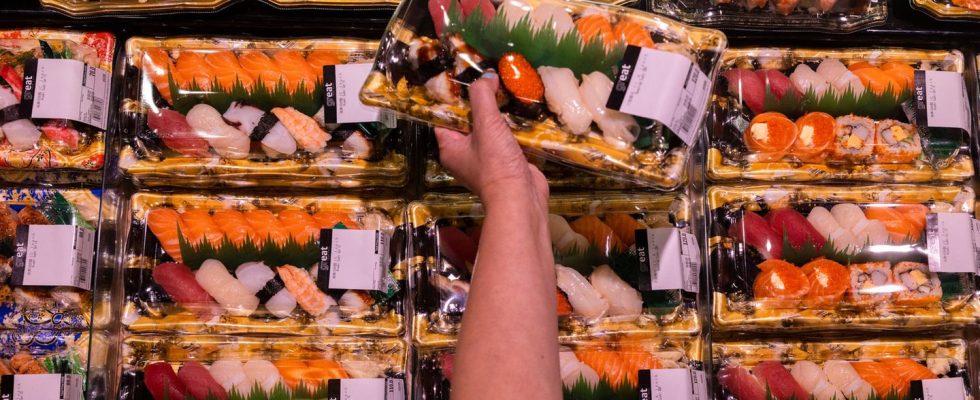Fukushima
Researchers find massively irradiated fish just before Japan releases radioactive water into the sea
Many countries import seafood from Japan, including Hong Kong. The special administrative region threatened Japan with a far-reaching import ban on Japanese fishery products in view of the impending discharge of contaminated cooling water from the Fukushima nuclear ruins
© Louise Delmotte/AP/DPA
Some of Japan’s trading partners are restricting their imports – they fear radiation exposure from the cooling water from the destroyed Fukushima nuclear reactor. A heavily contaminated fish from the region now offers material for new criticism.
The Japanese nuclear power plant operator Tepco could release 1.3 million tons of radioactive water into the Pacific as early as August. Because the water reservoirs around Fukushima are as good as full (Here you can read more about it). Although the decision was approved by the International Atomic Energy Agency (IAEA) a few weeks ago, trading partners are threatening the consequences. Another trigger for the controversy is a fish, a black stonefish.
The British “Guardian” reports that the fish caught in May from the region around the power plant has now been examined. According to Tepco (Tokyo Electric Power Company), this had a cesium-137 concentration of 18,000 becquerels per kilogram. The legal limit in Japan is 100 becquerels per kilogram, which is 180 times the exposure. Cesium-137 is a radioactive material produced by the fission of uranium.
Fish found at Fukushima with 180x pollution
The black stonefish is not the first specimen to be affected. A total of 44 fish with elevated caesium-137 levels were found between May 2022 and May 2023, Tepco confirmed to the Guardian. However, 90 percent were found within or near the power plant’s inner breakwater. In January 2016, almost five years after the reactor catastrophe, nets were installed to prevent possibly contaminated fish from swimming into the open sea. This seems to work in the majority of cases.
Nevertheless, the country’s trading partners are afraid of possibly contaminated fish. Japan is the third largest economy in the world and depends on its exports. It exports almost a quarter of its agricultural exports to Hong Kong (23.3 percent), followed by China with 14.8 percent and the US with 13 percent. About a third of these are fisheries products, according to a 2019 report by the Federal Ministry of Food and Agriculture.
China and Hong Kong threaten Japan with consequences
Since this week, China has been testing Japanese seafood across the board for radioactivity. As a result, some wholesalers stopped trading in Japanese products altogether. Hong Kong threatened to ban food imports from ten Japanese prefectures if the water release goes ahead as planned. And South Korea has already stopped importing food and seafood from the Fukushima region.
The Japanese prime minister criticized these decisions during a trip to Qatar last week, particularly with a view to China. His government will “push for a discussion based on scientific evidence” regarding the water in Fukushima.
Life after nuclear disaster
The post-apocalyptic world of Fukushima
The IAEA itself agreed in a report with Japan. The decision would be in line with “international safety standards,” General Director Rafael Grossi wrote in a foreword. “Furthermore, the IAEA notes that the controlled, phased discharge of the treated water into the sea, as currently planned and evaluated by Tepco, would have negligible radiological impacts on humans and the environment.”
The German Federal Office for Radiation Protection also agrees and summarizes on its website: “From a radiological point of view, such a discharge of the treated waste water is harmless if it is distributed over a longer period of at least 10 years.” This corresponds to the plans presented by Tepco. The fish is probably an exception too: “Today, almost no food in Japan is radioactively contaminated; and the consumption of food produced in Fukushima Prefecture contributes only negligibly to additional radiation exposure today.”
Sources: Teco“Guardians“, Federal Ministry of Food and Agriculture, IAEA, Federal Office for Radiation Protection


